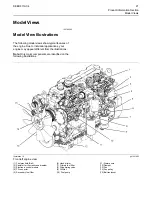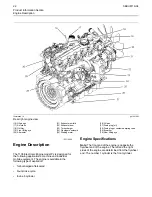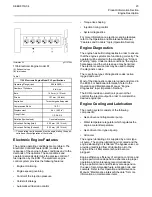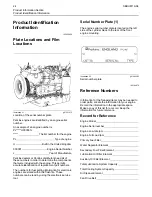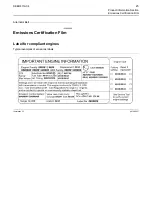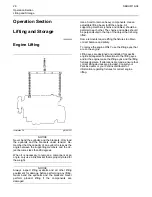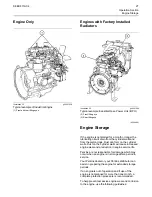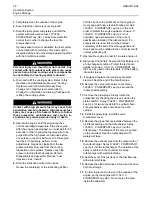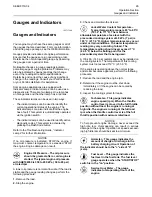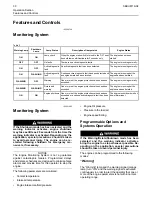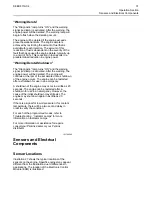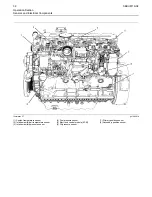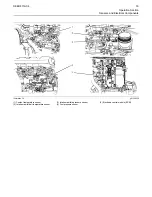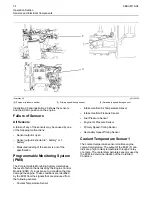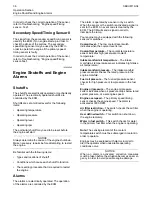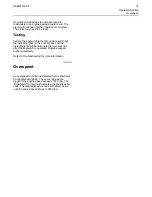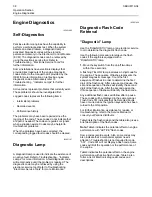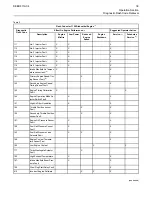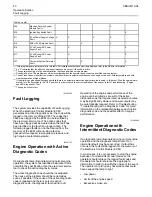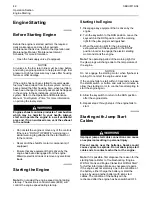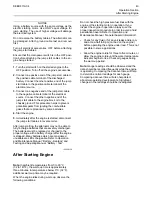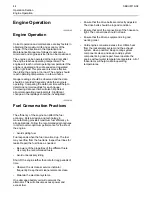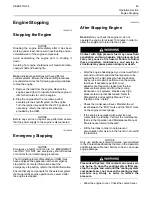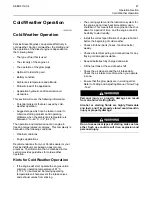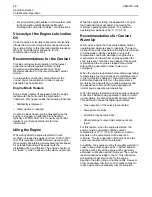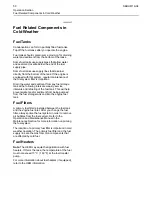
Failure of the Coolant Temperature
Sensor
The ECM (5) will detect a failure of the coolant
temperature sensor. The diagnostic lamp will warn
the operator about the status of the coolant
temperature sensor. A failure of the coolant
temperature sensor will not cause a shutdown of the
engine or any horsepower change. In order to check
the correct operation of the sensor, refer to
Troubleshooting, “Engine Temperature Sensor Circuit
- Test”.
Intake Manifold Air Temperature
Sensor 2
The intake manifold air temperature sensor
measures the intake air temperature. A signal is sent
to the ECM (5). The intake manifold air temperature
sensor is also used by the ECM to determine
initiation of the Cold Start Strategy.
In order to check the correct operation of the sensor,
refer to Troubleshooting, “EngineTemperature
Sensor Circuit - Test”.
Intake Manifold Pressure Sensor 3
The intake manifold pressure sensor measures
pressure in the manifold. A signal is sent to the ECM
(5).
Fuel Pressure Sensor 4
The fuel pressure sensor measures the fuel pressure
in the fuel manifold. A signal is sent to the ECM (5).
Electronic Control Module 5
The ECM is the control computer of the engine. The
ECM provides power to the electronics. The ECM
monitors data that is input from the sensors of the
engine. The ECM acts as a governor in order to
control the speed and the power of the engine.
The ECM adjusts injection timing and fuel pressure
for the best engine performance, the best fuel
economy and the best control of exhaust emissions.
Engine Oil Pressure Sensor 6
The engine oil pressure sensor is an absolute
pressure sensor that measures the engine oil
pressure in the main oil gallery. The engine oil
pressure sensor detects engine oil pressure for
diagnostic purposes. The engine oil pressure sensor
sends a signal to the ECM (5).
Low Oil Pressure Warning
The setpoint for the low pressure warning is
dependent upon the engine speed. The fault will be
active and logged only if the engine has been running
for more than 8 seconds.
Very Low Oil Pressure Warning
The very low oil pressure setpoint is dependent upon
the engine speed. If the DERATE mode of the engine
monitoring system is selected, the ECM (5) will
derate the engine power. The engine horsepower will
be limited.
Failure of the Engine Oil Pressure Sensor
The ECM (5) will detect failure of the engine oil
pressure sensor. The diagnostic lamp warns the user
about the status of the engine oil pressure sensor.
The engine oil pressure related strategies will be
disabled in the event of a failure of the engine oil
pressure sensor. A failure of the engine oil pressure
sensor will not cause a shutdown of the engine or
any horsepower change. In order to check the correct
operation of the sensor, refer to Troubleshooting, “5
Volt Sensor Supply Circuit - Test”.
Primary Speed/Timing Sensor 7
If the ECM (5) does not receive a signal from the
primary speed/timing sensor , the
“
DIAGNOSTIC
”
lamp will indicate a diagnostic fault code which will be
logged in the ECM memory.
If the ECM does not receive a signal from the primary
speed/timing sensor (7), the ECM will read the signal
from the secondary speed/timing sensor (8). The
ECM continually checks in order to determine if there
is a signal from both sensors.
Intermittent failure of the sensors will cause erratic
engine control.
Failure of the Primary Speed/Timing
Sensor
Correct operation of the primary speed/timing sensor
is essential. Software in the ECM protects against
reverse running of the engine. If the primary speed/
timing sensor fails there is no automatic protection
against reverse running. In some applications, it is
possible for the transmission to run the engine in
reverse. In this event, Stop the engine immediately.
Turn the keyswitch to the
“
OFF
”
position.
SEBU8119-04
35

